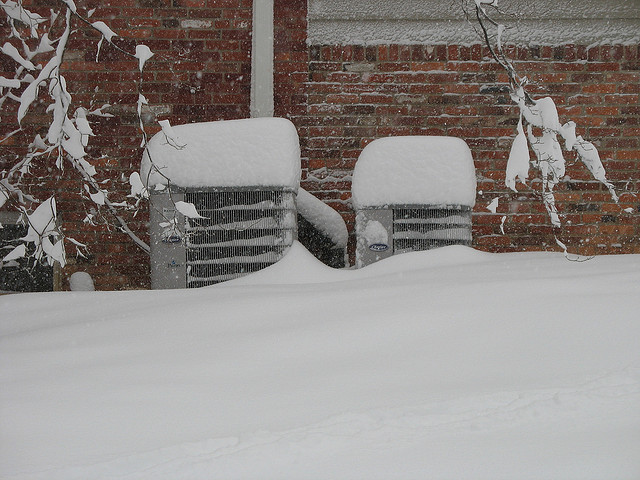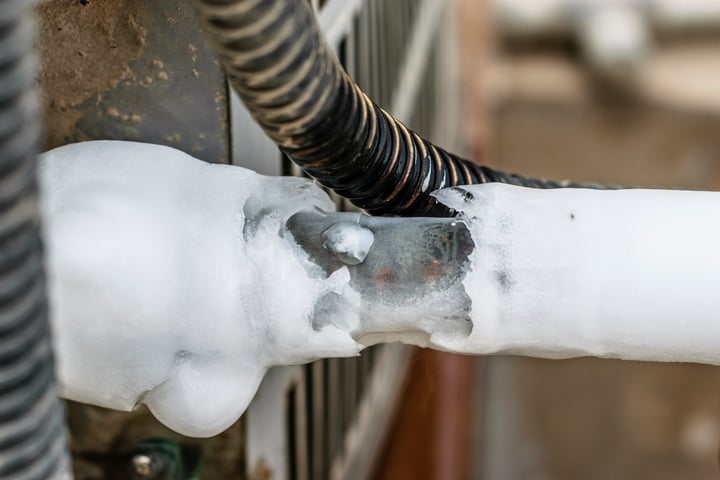Identifying a Frozen AC Pipe - Effective Solutions for Home Cooling Systems
Identifying a Frozen AC Pipe - Effective Solutions for Home Cooling Systems
Blog Article
What're your thoughts about Why Is Ice On My Outside Air Conditione?

Introduction
Discovering that your a/c pipe is iced up can be concerning, particularly throughout warm summertime when you rely on your ac system one of the most. Understanding what to do in such a circumstance is essential to prevent more damage to your air conditioning system and ensure your convenience indoors.
Understanding the Causes
Several elements can contribute to the freezing of an air conditioning pipeline. Recognizing these causes can assist you resolve the issue properly.
Absence of Airflow
One typical root cause of an icy air conditioning pipe is inadequate air flow. When the airflow over the evaporator coil is restricted, it can create the coil to drop below freezing temperature level, bring about ice formation on the pipe.
Reduced Refrigerant Levels
Insufficient cooling agent levels in your a/c system can also cause a frozen pipeline. Low cooling agent levels can create the pressure in the system to go down, resulting in the cold of dampness on the evaporator coil.
Cold Weather Conditions
In cooler climates, freezing temperature levels outside can add to the freezing of a/c pipes. If your a/c unit is not properly shielded or if there are leakages in the ductwork, chilly air can penetrate the system, triggering the pipeline to freeze.
Dirty Air Filters
Unclean or blocked air filters can restrict air flow in your air conditioner system, bring about various issues, including a frozen pipe. It's necessary to replace or clean your air filters frequently to guarantee proper air movement and protect against ice buildup.
Signs of a Frozen Air Conditioner Pipe
Recognizing the indications of an icy air conditioning pipeline is crucial for punctual activity.
Reduced Airflow
If you notice a significant decline in air movement from your vents, it can suggest a frozen pipeline.
Ice Buildup on the Pipe
Noticeable ice build-up on the cooling agent line or the evaporator coil is a clear indicator of a frozen air conditioner pipe.
Strange Sounds from the Unit
Unusual audios, such as hissing or gurgling, coming from your a/c device can signal that there's ice present on the pipe.
Immediate Actions to Take
When confronted with an icy air conditioner pipe, it's vital to act swiftly to avoid additional damages to your cooling system.
Shutting off the a/c
The initial step is to shut off your a/c unit to avoid the system from running and aggravating the issue.
Checking for Blockages
Inspect the location around the interior device for any type of obstructions that might be blocking airflow, such as furniture or curtains.
Thawing the Pipe
You can utilize mild techniques like placing towels soaked in cozy water around the frozen pipe to aid thaw it slowly.
Safety nets
Taking safety nets can aid prevent future incidents of a frozen a/c pipeline.
Regular Maintenance Checks
Arrange routine upkeep talk to a professional HVAC professional to guarantee that your air conditioner system is running effectively.
Transforming Air Filters
On a regular basis replace or clean your air filters to stop air movement limitations and preserve optimum performance.
Protecting Exposed Pipes
If your air conditioner pipelines are exposed to cold temperatures, take into consideration insulating them to avoid cold throughout cold weather.
Looking For Professional Help
If DIY approaches fall short to resolve the issue or if you're unsure about how to proceed, it's best to look for aid from a certified HVAC professional.
When DIY Methods Fail
If your efforts to thaw the pipeline or address other issues are not successful, it's time to hire a professional.
Importance of Hiring a Professional HVAC Technician
A qualified HVAC service technician has the know-how and devices needed to diagnose and fix problems with your air conditioner system safely and properly.
Final thought
Managing a frozen air conditioner pipeline can be a discouraging experience, but understanding just how to respond can help minimize damages and restore convenience to your home. By recognizing the causes, acknowledging the indications, and taking timely activity, you can successfully attend to the problem and stop future incidents.
What to Do If Your AC Line Is Frozen
Make Sure All Supply and Return Air Vents Are Open
If you notice problems with airflow, the first thing you should do is check your supply and return vents. Supply vents distribute clean, conditioned air throughout your home. As this air becomes stale, it’s pulled into the return vent, where it’s reconditioned before being sent back out through the supply vent.
When these vents are closed, air won’t flow in the home. Before examining your AC, check the vents in every room and ensure they’re all open.
Check for a Dirty Air Filter
Another possible cause of limited airflow is a dirty air filter. Your air conditioner’s filters catch elements you don’t want to breathe in, such as dirt and dust. Over time, filters can become clogged, ultimately blocking air from flowing in and out. The lack of airflow can then cause the entire coil to freeze and will completely restrict any air from moving through it. The AC may need to be powered off for one to two days to allow the coil to thaw after replacing the filter to allow proper functioning of the unit. This debris can also accumulate on your AC’s evaporator coil, requiring a more serious repair. In general, air filters should be cleaned regularly (about every two weeks).
Assess Your Outdoor Unit
In addition to checking your AC, assessing the outdoor unit is a good idea. Also known as the condensing unit, it works with your interior unit to release heat outside. An issue with the outdoor unit can result in rising internal temperatures.
Overgrown Shrubs or Clogged Leaves
From leaves and twigs to shrubs and debris, there’s no shortage of outdoor elements that can accumulate around your condensing unit. When these elements get lodged inside the unit, they can block airflow. Fortunately, removing the blockage can solve the problem.
Sounds of a Broken Fan
Shrubs and leaves aren’t the only things that can impede your outdoor unit’s airflow. If the fan is broken, the unit won’t be able to properly get rid of heat — which means the internal temperature won’t go down. First, make sure the fan is spinning. If it is, check for the following sounds of a broken fan:
Buzzing Rattling Screeching Hissing Clicking Preventative Measures
Nobody wants to deal with a frozen AC line. In addition to causing problems with your air conditioner, they require professional repairs. On the bright side, there are preventative measures you can take to help ensure this issue doesn’t arise in the first place.
https://www.coopergreenteam.com/blog/what-to-do-if-ac-line-frozen

I found that write up on What Do I Do If My AC Pipe Is Frozen while doing a search on the web. You should take the opportunity to distribute this page if you appreciated it. I am grateful for your time. Don't hesitate to check up our site back soon.
Book Service Now Report this page